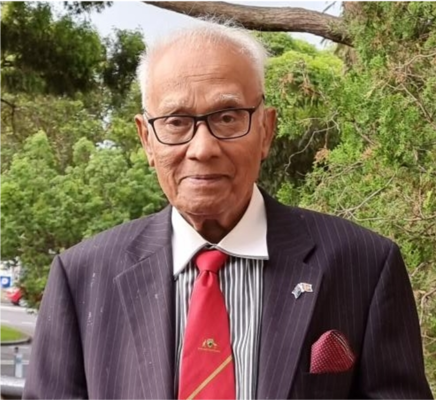What it takes to make Prime Minister Modi’s call to buy domestic goods feasible? – By N.S.Venkataraman


When U S President Trump announced that 50% tariff would be imposed on most of the goods exported from India to US , it created shock waves in India. Further, when US President hiked the tariff to 100% on branded drugs and targeted heavy trucks , furniture also, the shock felt by Indians further intensified. . In Such scenario, it became clearly evident that Indian exports to US would fall down to a considerable level. Cross section of Indians have started wondering how India would be able to tackle this issue.
The immediate consensus view and reaction in India is that India should avoid excessive dependence on export of goods and boost the consumption of domestic goods in India.
While boosting export earnings are important and vital for every country to sustain its economic growth , there is now realization in India that ensuring large consumption base in India for domestic goods is also equally important,if not more important.
Mr. Modi’s call :
Prime Minister Modi has responded to the present tariff assault by U S by urging Indians to buy domestic goods and substitute it for the imported goods to the extent possible.
Obviously, Mr. Modi thinks that increasing use of domestic goods on priority basis by Indians is necessary to ensure that any drop in export level to USA could be compensated .
In terms of first principle, Mr. Modi’s view appears to be appropriate and timely.
Indians have , by and large, understood the basic logic for Mr. Modi’s call and is likely to respond positively to the extent feasible. However, the basic question is as to what extent this would be feasible.
Domestic supply not catching up with domestic demand :
Strengthening massive consumption base in the country requires strong domestic supply growth and robust supply chain management. The critical issue is that India does not have adequate supply growth to match the demand growth in the country for products and services.
During the last eleven years, after Mr.Modi has taken over as Prime Minister of India, Indian economy has been exhibiting steady growth trend and India has emerged as the 4th largest economy in the world, with India targeting to emerge as the third largest economy in the world in the next few years. It is now well recognised that India has the world’s fastest-growing major economy, with real GDP growing at 6.5% and nominal GDP tripling from ₹106.57 lakh crore (2014–15) to ₹331.03 lakh crore (2024–25) . India’s economy has risen from 2 trillion US dollar in 2014 to 4.3 trillion dollar now.
Of course, such steady growth in the national economy and the resilience of Indian economy in the face of the global slow down has not happened by chance. It is so due to several structural reforms introduced and huge investment in the infrastructure sector in India , apart from robust monetary policy initiatives.
With the economic growth and consequent growth in demand , the domestic supply is not increasing in tune with the growth in demand.
Whither manufacturing sector ?
While studying the economic growth trend in India during the last eleven years, it would become evident that such growth has been possible largely due to the growth in the services sector particularly software industry and the reasonably good performance of agricultural sector, which have been ably supported by overall proactive policy measures of the government. The Information Technology Industry is responsible for 7.5% of the country’s GDP, and it is expected to reach 10% by FY25. Agriculture’s share in India’s Gross Domestic Product (GDP) is approximately 17 to 18%,
What is particularly conspicuous is the fact that the manufacturing sector in the country has not expanded and grown to the level of India’s potential. The manufacturing sector currently contributes only around 17% to India’s GDP. This manufacturing sector is vital for economic growth, job creation and global competitiveness but such growth is not happening to the extent needed in spite of the government’s efforts.
Alarming level of import dependence :
While domestic demand in multiple sector is increasing steadily and with the manufacturing sector not expanding in tune with the demand growth , India is becoming net importer of several products, which is now reaching an alarming level.
While Indian pharmaceutical formulation industry is forging ahead , the fact is that around 50% of the Indian requirement of Active Pharmaceutical Ingredients (API), which are input for the pharma formulation , are met by import. India has done remarkably well in boosting the production of solar and wind power , which has now reached around 192 GW. However, for setting such solar and wind power projects, significant level of components are now imported. In the case of electronics, semiconductor and automotive industry, rare earth magnets and chips have to be imported. India imports more than 250 million tonne of crude oil per year which constitutes more than 80% of crude oil requirement. Several bulk chemicals and speciality chemicals are being imported in very large quantity with import of products like methanol and poly vinyl chloride exceeding around 3 million tonne per annum each. So many other instances about such high level of imports can be pointed out, making Indian industry highly vulnerable to import dependence scenario.
Need for boosting domestic production at competitive standards :
Realising the requirements , Prime Minister has emphasised the urgent need for strengthening the spirit of Swadeshi ,which means that manufactured goods made in India should be made from materials that have also been produced in India.. He said that what can be made in India must be made in India. He further said that in the present scenario, Atmanirbhar ( self reliance and self sufficiency ) is a necessity and not an option. He has appealed to the entrepreneurs and project promoters in India to respond by designing business models that advance self reliance, with emphasis on product quality. The user friendly and sustainable production of products is vitally important .
Further, while Atmanirbhar and Make in India scheme are being promoted , the products produced in the country need to be globally competitive in terms of quality and price and provide enough value to customers by ensuring that the India produced goods are on par with the imported goods in all respects.
What is the issue ?
The question arises as to why India is not able to expand the manufacturing base and has become net importer of products and goods.
A careful analysis would highlight the fact that there is no excuse for manufacturing sector in India performing below the potential level. India has large land size, different soil and climatic conditions, enormous mineral resources, long coastal belt ,apart from huge demographic strength with youth population ( working hands) constituting highest share of India’s total population.
There is also no particular investment constraint, as investors are responding to public issues to raise money for new projects with enthusiasm.
Chairman of State Bank of India has stated recently that corporate sector in India now hold significant cash balances. He further stated that internal estimates of State Bank of India put cash availability at Rs.13.5 trillion in corporate sector, which indicate that capex expansion , investment in projects can take place to a considerable extent by corporate sector through internal resources.
Obviously, the constraint is in the technology front , as India is unable to implement any major or even medium scale projects in several manufacturing sector without being supported fully or partly with overseas technology. There are several instances of technology repeatedly being sought from abroad for new projects to produce products , that has already been under production in India for last several years.
As a matter of fact, one can even say that growth in the manufacturing sector in India mostly take place only to the extent that the overseas technology suppliers would be willing to share the technology and they often demand exhorbitant and unaffordable fees and putting forth tough conditions.
Government of India cannot be blamed for such technology constraint. Modi government is doing all that it could to encourage Indian R&D institutions and technology development efforts by launching proactive schemes such as Production Linked Incentive (PLI)
State of research efforts
Presently, Science and Technology Ministry of Government of India is conducting a national science and technology survey to guage the state of scientific research in India.
It is reported that the survey covers around 8000 research and development bodies. The survey is on now and the findings so far point out that the role of private sector in R&D activity is minimal. Most of the responses for the survey has been from government owned research institutions and private sector’s response is minimal.
Further, about 75% of India’s R& D funding come from the government owned public sector. On the other hand, in developed countries, private sector contribute the lion’s share of national research efforts.
With the government promoting and funding chain of government owned research laboratories in the country and most of investment in R& D activities is from government, the inadequacy in the performance of government owned research labs is very conspicuous .
Need for revamping R & D activity :
Success of research and development efforts is one of leading indicators of development.
It appears that the confidence of the project promoters in India in India’s R&D capability is not high. While India’s research efforts have certainly made huge strides in certain sector such as space research by ISRO, development of cutting edge technologies by Defence Research and Development Organisation (DRDO), nuclear technology by Atomic Energy Commission , such performance is not evident in several other sector.
To cut the long story short, the immediate need is to introduce an element of dynamism and time bound purposive research in research institutions. To achieve this condition, the feasibility of converting the government owned R&D institutions as joint sector projects with participation from India based and overseas private bodies is necessary.
Certainly, in the joint sector R&D projects, private sector are in a position to invest substantial money from its own internal resources. What is required from private sector is will and determination to achieve results, of course with reasonable profit motive.
Apart from research activities carried out by dedicated research bodies and industrial units , research and innovation should be the focus area of higher education. Universities have to play a key role in achieving success in research sphere. Government of India is giving substantial money to several universities to conduct research activities. However, there appear to be no significant success commensurate with the funds allotted by government of India to universities. While there may be some successful efforts, they appear to be too few and far between.
Several universities and research bodies seem to be choosing subject for research without ascertaining the market needs for such research efforts. In other words, the practice of assessing the market potentials before choosing the subject for research appear to be nearly conspicuous by absence. This lacuna needs urgent attention .
It is well accepted that in carrying out research activities, the results may not always be successful. At the same time, there should be some sort of accountability on this matter.
A careful study of big leap forward by China in R&D pursuits would readily reveal the fact that Government of China encouraged and facilitated the multinational companies to invest in R&D in China , preferably in collaboration with domestic Chinese companies. This policy approach of Government of China Has considerably enabled China to expand its technology base, optimise process efficiency parameters and emerge as a competitive player in the global market.
The Prime Minister’s call to buy domestic goods requires that technology base in the country should be considerably strengthened and India’s present dependence on overseas technology should become more selective.
Overcoming the technology constraint in the country is the primary need of the day.






















